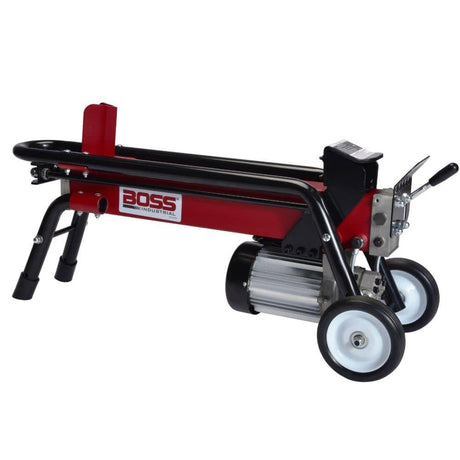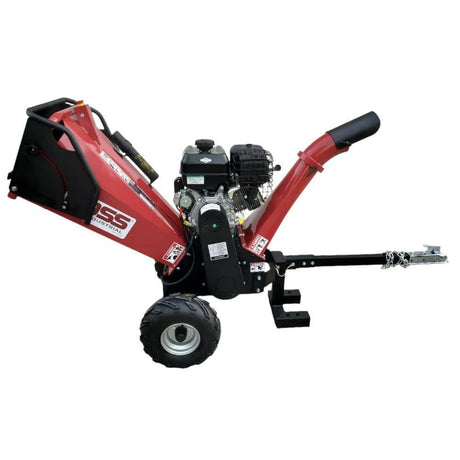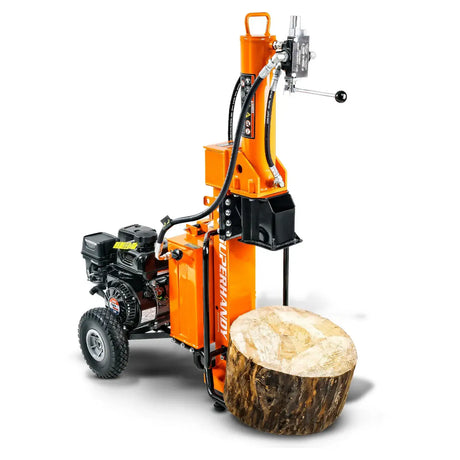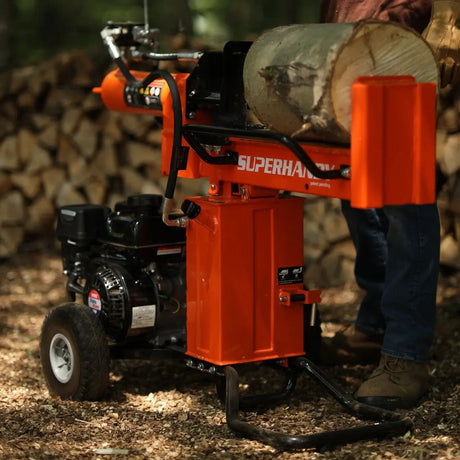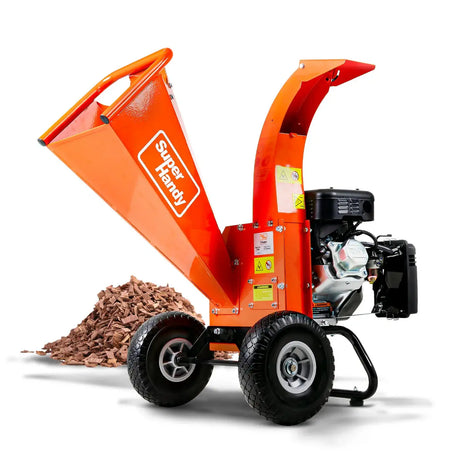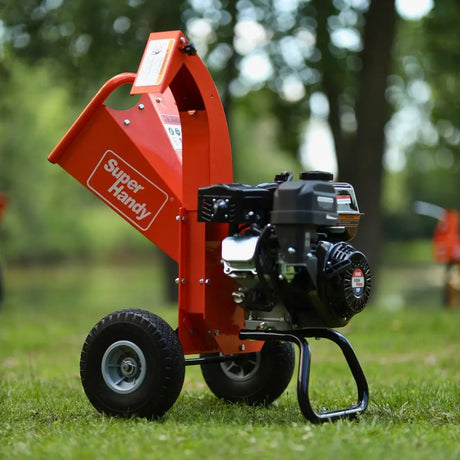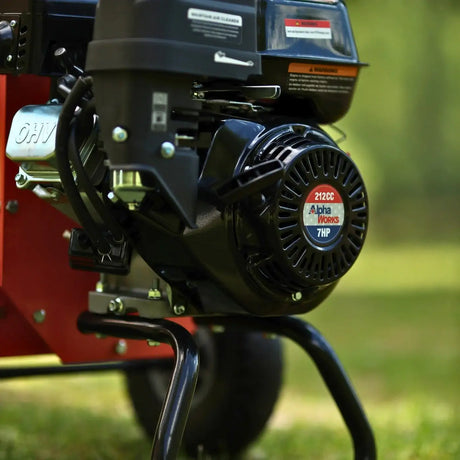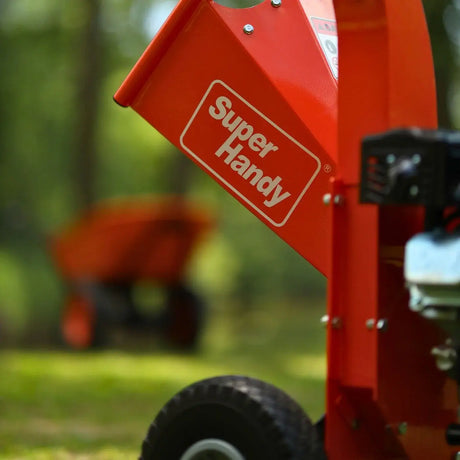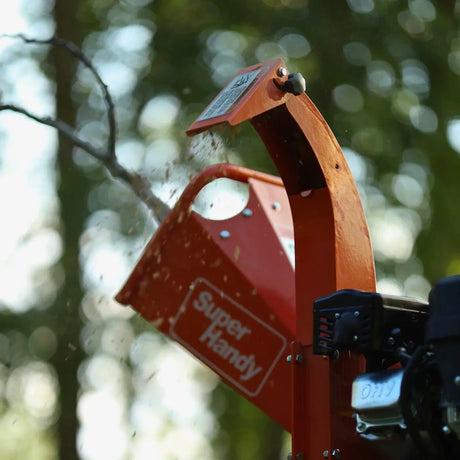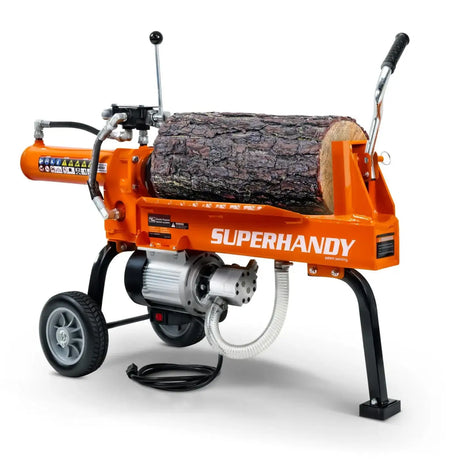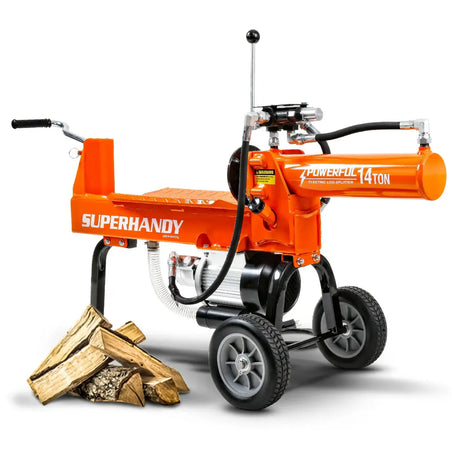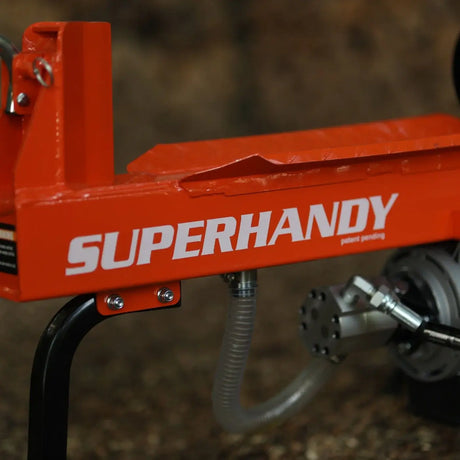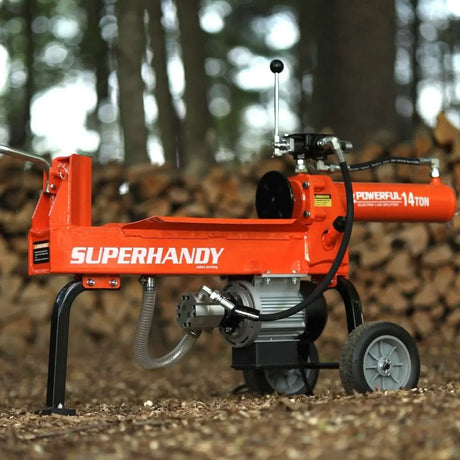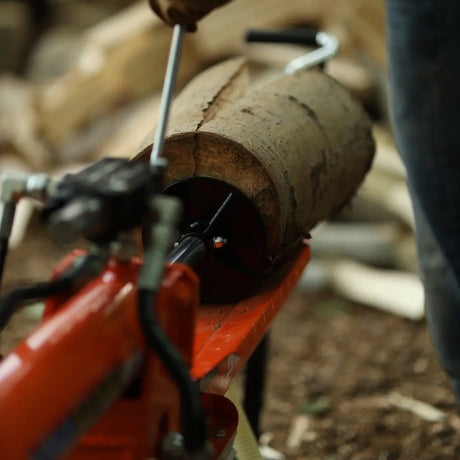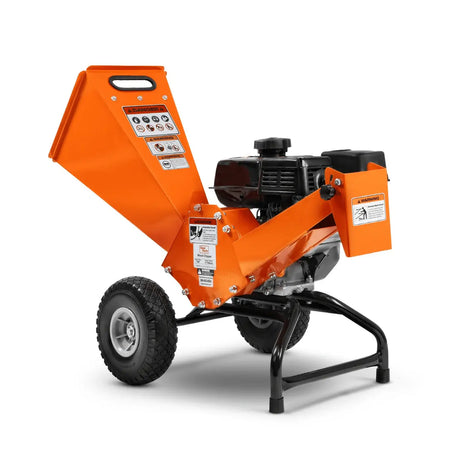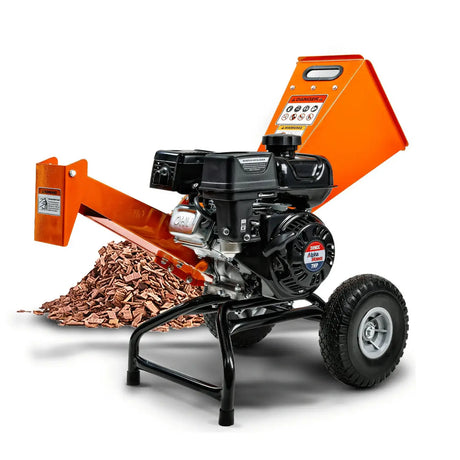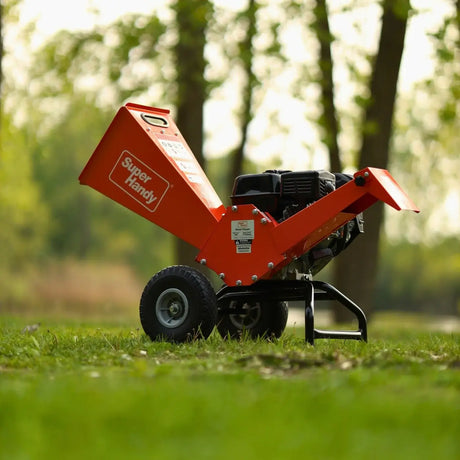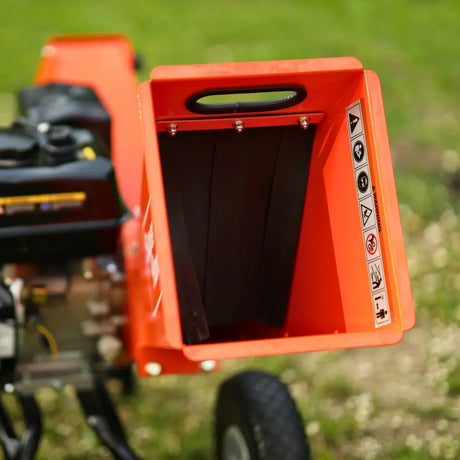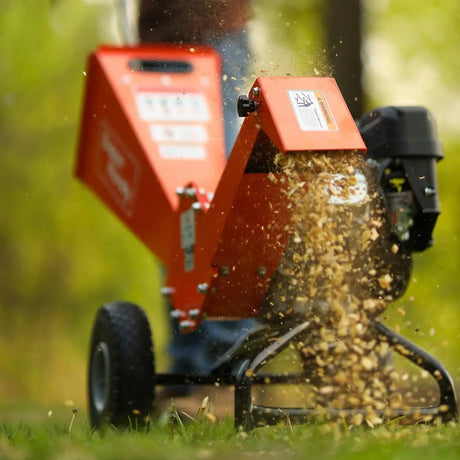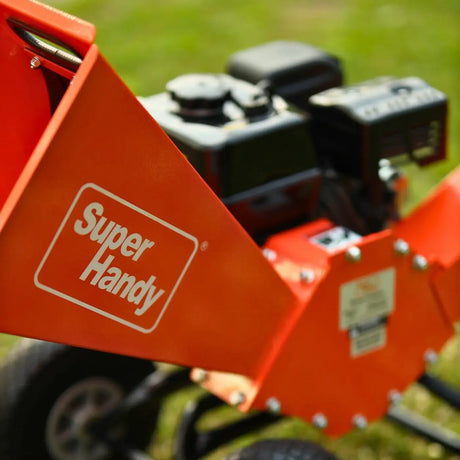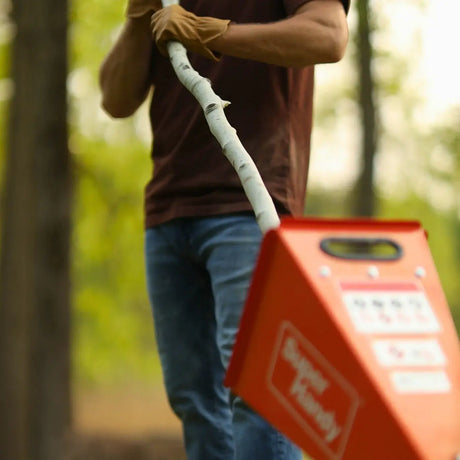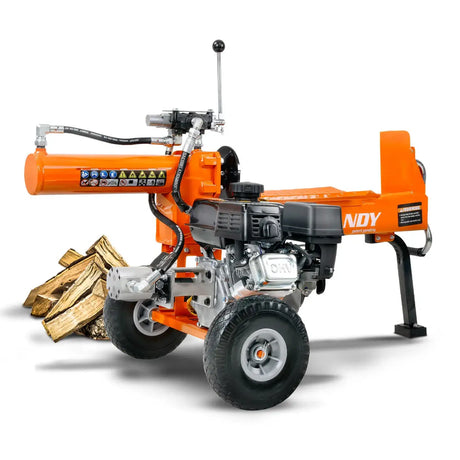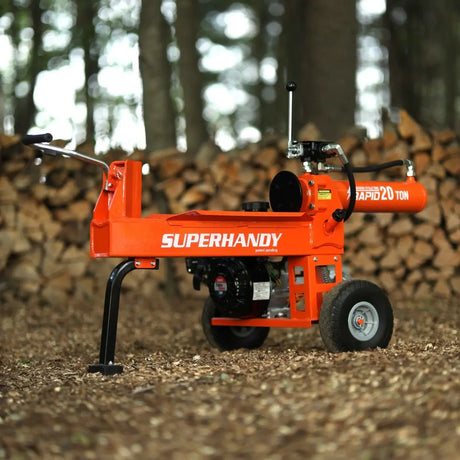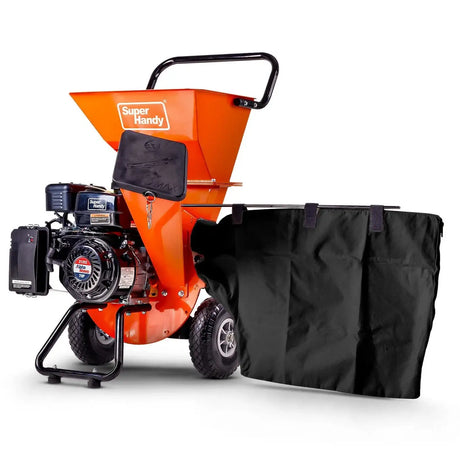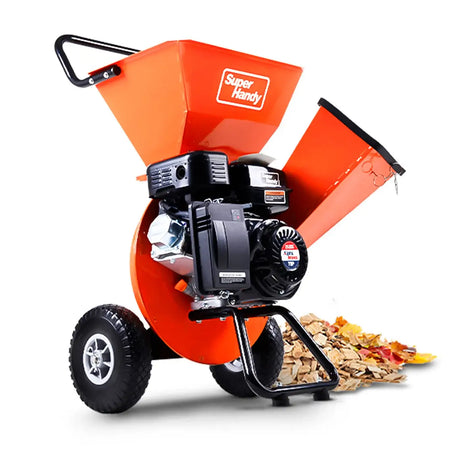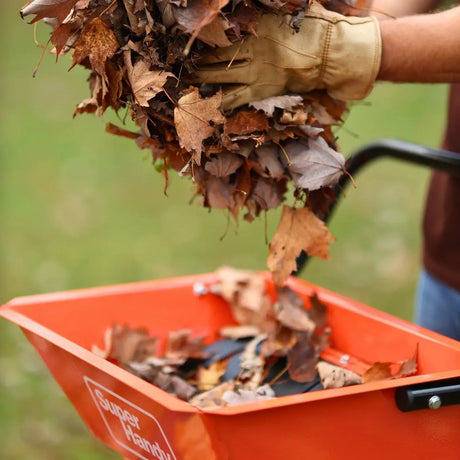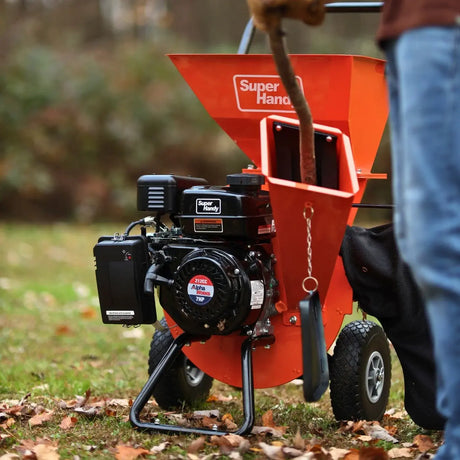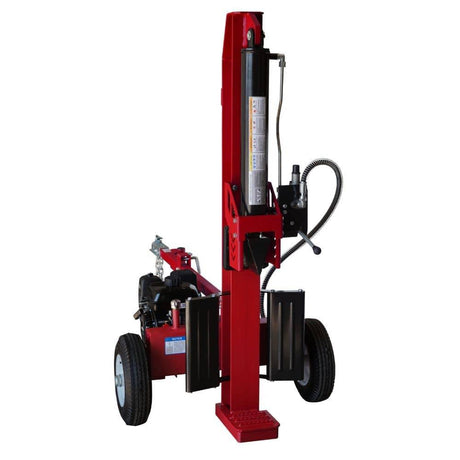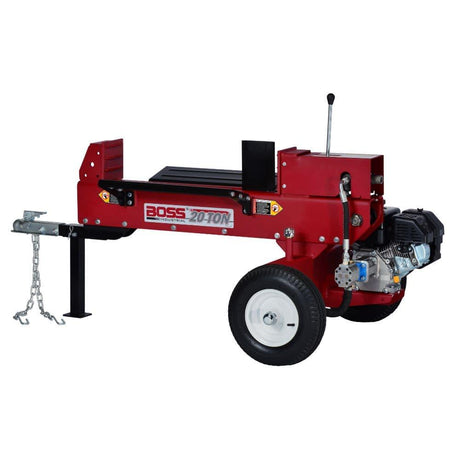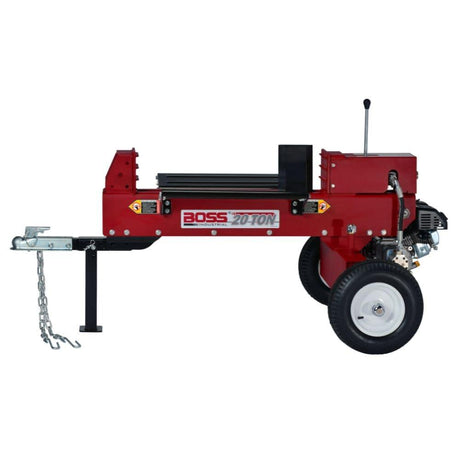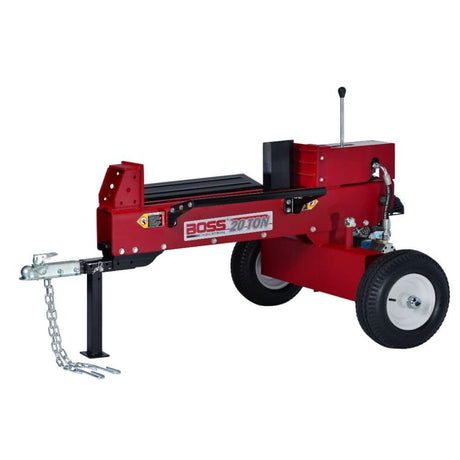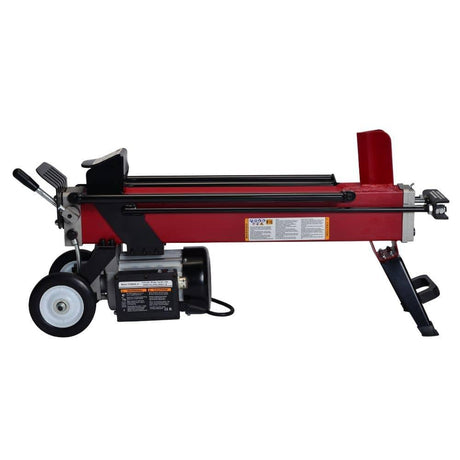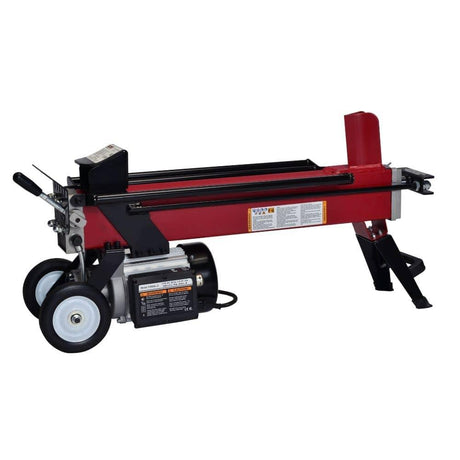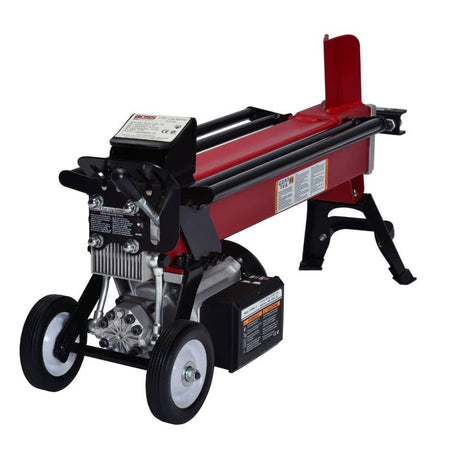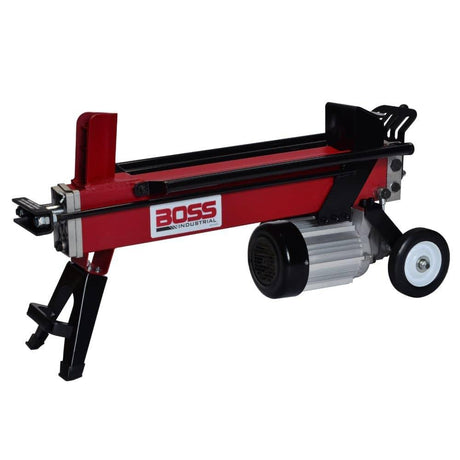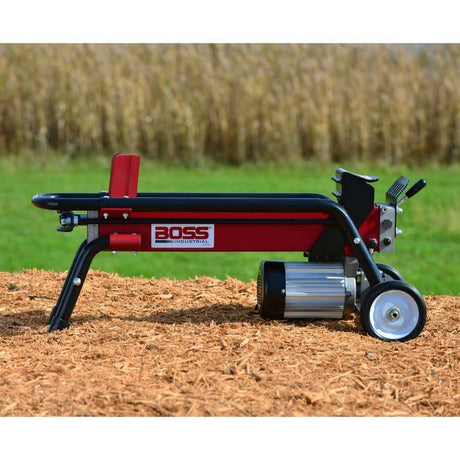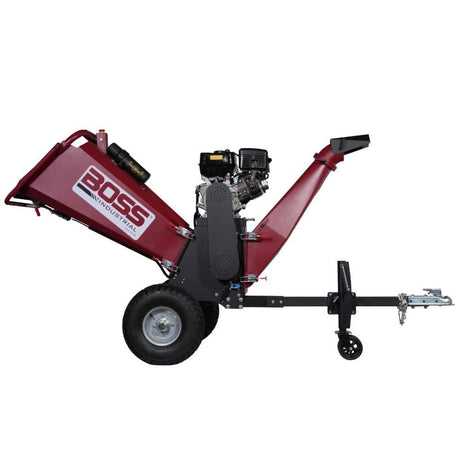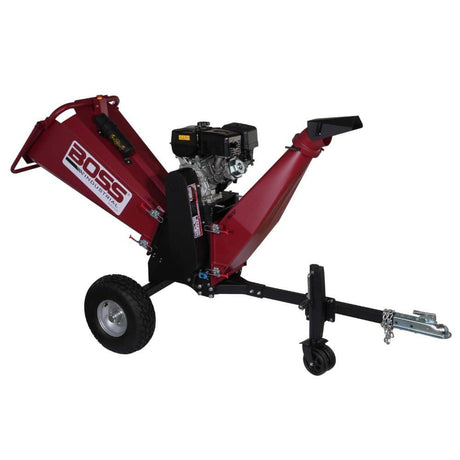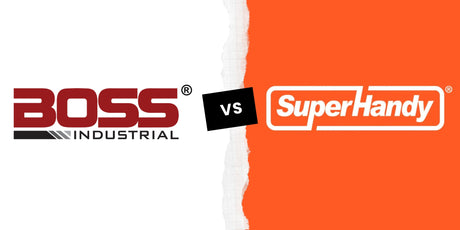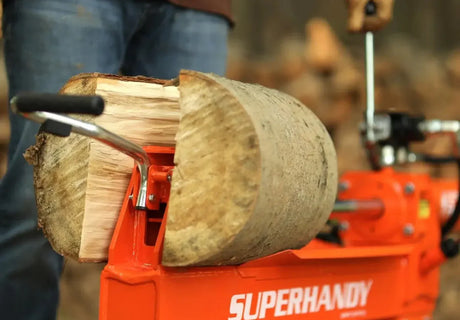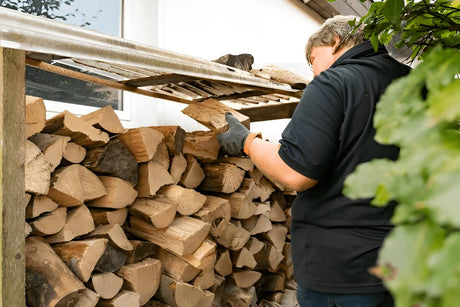Understanding the Two Technologies: Hydraulic vs. Kinetic Log Splitters
How Hydraulic Log Splitters Work
Hydraulic splitters have been around for decades, and for good reason-they're reliable and strong. A hydraulic log splitter uses a hydraulic pump to push fluid through hoses, creating pressure that drives a metal ram forward. That ram slowly but steadily forces the log against a wedge, splitting it apart.
It's not flashy, but it gets the job done-even with dense, knotted wood. If you've ever seen a wood splitter take its time working through a stubborn chunk of oak, you were probably watching a hydraulic unit in action.
p>For a deeper dive, check out our full comparison guide with charts.
Key features:
- Slower, controlled motion
- High splitting force (measured in tons)
- Handles tough, irregular logs with ease

How Kinetic Log Splitters Work
Kinetic log splitters are the newer kids on the block-and they're all about speed.
Instead of using fluid and pressure, they rely on a flywheel system that stores energy. When you activate the machine, that energy releases in a sudden burst, slamming the ram forward to split the log in a fraction of a second. This rapid-fire motion is similar to the DR RapidFire models that many users love.
Imagine hitting a log with a sledgehammer instead of a slow press-that's the kinetic advantage.
What makes them different:
- Blazing-fast cycle times (often 2-3 seconds)
- No hydraulic fluid or pumps to maintain
- Best suited for clean, straight-grain logs
Why the Mechanism Matters When Choosing a Log Splitter
| Feature | Hydraulic Log Splitter | Kinetic Log Splitter |
|---|---|---|
| Splitting Mechanism | Hydraulic fluid–driven ram | Flywheel-driven burst force |
| Cycle Time | 12–20 seconds | 2–3 seconds |
| Splitting Force | High (20–40+ tons) | Quick burst (not measured in tons) |
| Ideal Wood Type | Green, knotty, large, irregular logs | Straight-grain, seasoned logs |
| Power Source | Gas or Electric | Usually Electric |
| Best For | Power, versatility, heavy-duty logs | Speed, simplicity, small clean logs |
The core difference in mechanism between a hydraulic vs kinetic log splitter directly affects how the machine performs in the real world.
A hydraulic splitter is better for those dealing with a variety of log types, especially big rounds, green wood, or logs with knots. The slow, steady force pushes through almost anything.
Kinetic log splitters, on the other hand, are perfect if you want to move fast and process a high volume of easy wood that's straight and dry. But they don't love twisted grain or oversized rounds.
So, what's more important to you-versatility and brute force, or speed and simplicity? That's the real question.

Key Performance Differences That Impact Your Workflow
Splitting Force and Wood Types: Which Handles Tougher Logs?
When it comes to raw force, hydraulic splitters take the lead.
They deliver steady, high-pressure force-often in the 20 to 40-ton range-which makes them perfect for tough jobs. Got green oak, stringy elm, or knotty rounds? A hydraulic log splitter will push through them without blinking. It's slow, but powerful.
(See our complete guide to choosing the right log splitter size based on wood type and log diameter.)
Kinetic splitters, by comparison, don't use sustained pressure. Instead, they rely on one quick burst of energy. That works great for straight-grained, seasoned wood, but if the log is twisted, wet, or extra large, it may bounce off or stall out.
Quick breakdown:
- Hydraulic: Best for irregular, dense, or oversized logs
- Kinetic: Best for dry, clean, and uniform wood
Cycle Time and Speed: How Fast Do They Actually Work?
This is where kinetic log splitters steal the spotlight.
Their flywheel system delivers a split in as little as 2-3 seconds. That's six to ten times faster than a typical hydraulic splitter, which might take 12 to 20 seconds per cycle-especially on larger hydro unit models with longer return strokes.
If you're working through a big stack of logs and time matters, that speed adds up quickly. In one hour, a log splitter kinetic setup can process 2 to 3 times more wood than a comparable hydraulic splitter.
But speed isn't always the full story-especially if the logs you're splitting need a more careful approach or if you're splitting all the splitting yourself without a helper to load.
Efficiency and Output Over Long Splitting Sessions
In short bursts, both types perform well. But over longer sessions, differences start to show.
Hydraulic splitters run at a consistent pace. They're steady and reliable-even after hours of use. You won't be rushing, but you also won't be dealing with many breakdowns (as long as your hydraulic oil and filters are in check).
Kinetic log splitters, thanks to their lightning-fast cycle time, can process a much higher volume in less time. But they demand more from the operator. If you're loading and splitting solo, the speed can actually outpace your ability to keep up.
Also worth noting: kinetic splitters need cool-down time if you're pushing them hard for hours. Flywheels generate heat just like engines.
Bottom line:
- If you're splitting for 30-60 minutes at a time: kinetic saves time.
- If you're working all afternoon or commercially: hydraulic wins on consistency and endurance.

Maintenance, Ease of Use, and Long-Term Ownership
What Kind of Maintenance Do Hydraulic Splitters Require?
Hydraulic log splitters are workhorses, but they do need regular upkeep to stay in top shape.
You're dealing with hydraulic oil, filters, hoses, and valves-all of which can wear out or leak over time. It's not complicated, but it's more hands-on than some expect.
Here's what you'll need to stay on top of:
- Check and top off hydraulic oil regularly
- Change hydraulic filters as recommended
- Inspect hoses for cracks or leaks
- Clean debris off the ram and wedge after use
- Grease moving parts occasionally
If you don't mind getting your hands a little dirty once in a while, it's manageable. Just don't skip the basics, or you'll be chasing performance issues down the line.
Are Kinetic Splitters Easier to Maintain Over Time?
| Maintenance Task | Hydraulic Log Splitter | Kinetic Log Splitter |
|---|---|---|
| Check Fluid Levels | Required regularly | Not applicable |
| Change Filters | Every 50–100 hours | Not required |
| Inspect Hoses | Often, especially in cold | Not required |
| Lube Moving Parts | Occasional grease on ram, beam | Light lube on rack/pinion |
| Flywheel/Belt Maintenance | Not applicable | Inspect and clean occasionally |
Yes-kinetic units are simpler when it comes to maintenance.
They don't have hydraulic oil, filters, or high-pressure lines. That means fewer parts to check, fewer leaks to worry about, and quicker start-up time if you haven't used the machine in a while.
The main things you'll want to watch with a kinetic splitter are:
- Keeping the flywheel clean and free of debris
- Checking belt tension (if it's belt-driven)
- Occasional lube or inspection of the rack-and-pinion system
If you're the kind of guy who just wants to flip a switch and go, kinetic log splitters are easier to live with long-term. That's a good point if you prefer simplicity over tinkering.
Durability, Safety Features, and User Learning Curve
Durability-wise, both types can last 10+ years with good care. But their weak points are different.
Hydraulic splitters: prone to fluid leaks, worn seals, or hose failures over time-especially if stored in freezing temps or left exposed on the ground.
Kinetic splitters: fewer failure points, but the internal gears and flywheel system can wear down if abused or poorly maintained.
Safety is solid on both, but kinetic models move fast-really fast. That sudden burst can catch new users off guard. It's not dangerous if you're paying attention, but it demands focus and handed operation.
Learning curve:
- Hydraulic: more forgiving and easier for beginners to get used to
- Kinetic: faster operation = more awareness and timing needed
If you're teaching a teen or someone new to splitting wood, a hydraulic splitter might be the safer, more predictable idea.

Cost Breakdown: Upfront Price vs. Lifetime Value
Purchase Price Range for Each Type
If you're comparing price tags, hydraulic log splitters come in a wider range.
- Light-duty models can start around $700-$1,000
- Heavy-duty or commercial-grade units can climb to $2,500+ depending on tonnage and build
Kinetic log splitters, while simpler mechanically, tend to cost a bit more upfront in the mid-range category.
- Entry-level models start near $1,200
- Higher-end units range from $1,800 to $2,800
So while both can hit similar price points, hydraulic splitters give you more flexibility depending on how much ton you actually need.
Fuel, Repairs, and Ongoing Costs to Expect
| Cost Factor | Hydraulic Log Splitter | Kinetic Log Splitter |
|---|---|---|
| Entry-Level Price | $700 – $1,000 | $1,200+ |
| High-End Price | $2,500+ | $2,800+ |
| Typical Maintenance Cost | Moderate to High | Low |
| Fuel Type | Gas (more common) | Electric (mostly) |
| Long-Term Efficiency | High for heavy use, lower resale | Efficient for light/medium use |
Hydraulic models come with more moving parts-and more maintenance costs over time.
With a hydraulic splitter, you'll eventually spend on:
- Hydraulic oil (and filters)
- Hose replacements or leak fixes
- Occasional pump servicing
Kinetic log splitters skip the fluid system, so they're a bit more cost-efficient in the long run. But they're not completely hands-off. You'll still want to account for:
- Belt replacements (if applicable)
- Gear or rack maintenance
- Lubrication and occasional inspection of moving parts
Fuel usage? That depends on the power source. Gas-powered units (common in hydraulic splitters) burn more fuel and need oil changes. Electric log splitters (more common in kinetic units) are cheaper to run but require access to a reliable outlet.
Resale Value and Long-Term Investment Perspective
Good point-both types hold their value well if maintained properly.
Hydraulic splitters tend to resell easier, especially in rural areas where they're a known quantity. Everyone knows what they're getting, and there's a big second-hand market.
Kinetic log splitters are a bit more niche. You'll find fewer used models on the market, which can work in your favor if someone's specifically looking for one.
Tips for protecting resale value:
- Keep your splitter clean and dry when not in use
- Perform routine maintenance and log it if possible
- Avoid cosmetic damage like rust or faded paint
Over time, kinetic log splitters may edge out hydraulics in total cost efficiency-but if you're handy and plan to keep your splitter for a decade, a hydraulic splitter can be just as solid an investment.

Which Log Splitter Fits Your Needs? Use Cases by User Type
Best for Casual Homeowners Splitting Firewood Seasonally
If you're splitting a cord or two each fall for a fireplace, fire pit, or cabin, you don't need to overcomplicate things.
For context on how much wood you need, see our annual firewood needs by home size and region.
In most cases, a kinetic splitter is the better fit. The fast cycle time makes quick work of a small woodpile, and the low maintenance is perfect for folks who don't want to tinker with fluid, levers, or hoses. Plus, it's easy to store and roll out when needed.
But there's a catch: kinetic log splitters like clean, straight logs. If your pile's full of knots or fresh cuts from trees after a storm, you might lean hydraulic instead-slower, but more forgiving.
Good rule of thumb:
- If your firewood is seasoned and uniform → go kinetic.
- If you're dealing with mixed wood or green logs → hydraulic might be safer.
Best for High-Volume Firewood Producers or Commercial Use
Running a firewood business? Heating multiple homes? Splitting every weekend? Then you're in hydraulic territory-no question.
Hydraulic log splitters thrive under pressure. They can handle rough, wet, oversized, and knotty logs all day without a problem. Sure, they're slower per cycle, but they're built for endurance, not just speed.
That said, I've seen operations use both: a hydraulic splitter for the ugly stuff, and a kinetic model for the clean rounds to save time.
For commercial or high-volume use, consider:
- Vertical splitting capability for huge rounds
- Tonnage over 30+ if you're processing hardwoods
- Tow-behind features for mobility between jobs
It's all about matching machine to workload-and in big jobs, consistency beats speed every time.
Considerations for Rural vs. Suburban or Urban Settings
Where you live plays a bigger role than most folks think.
In rural areas, you're often off-grid or far from power. That makes gas-powered hydraulic splitters more practical. They're self-contained, portable, and can be towed into the woods or down a dirt trail without a second thought.
If you're still deciding between gas and electric, check out our gas vs. electric log splitter comparison.
In suburban or urban settings, noise, fumes, and storage space are real concerns. Electric log splitters and electric kinetic models shine here. They're quiet, clean, and compact-perfect for driveway or garage use without waking the neighbors.
Here's how to think about it:
- Rural = flexibility and fuel independence → go hydraulic
- Suburban/urban = clean, compact, and quiet → go kinetic
Wherever you're splitting, it pays to choose a machine that fits your space as well as your stack.

Final Thoughts: Which One's Right for You?
At the end of the day, both hydraulic and kinetic log splitters get the job done-it just comes down to how you plan to use it.
If you're after raw power, versatility, and the ability to chew through green, knotted, or oversized logs, a hydraulic splitter is the safer bet. It's slower, yes-but reliable and built to handle the tough stuff.
If you're more about speed, simplicity, and want to fly through clean, seasoned rounds with minimal upkeep, a kinetic splitter can save you time and effort.
Here's the quick takeaway:
- Go hydraulic if you're splitting varied wood types, working off-grid, or need long-session endurance.
- Go kinetic if you're after speed, low maintenance, and you're working with clean, dry logs.
Whichever route you choose, the right log splitter will make your woodpile smaller, your work easier, and your weekends a lot more productive.


